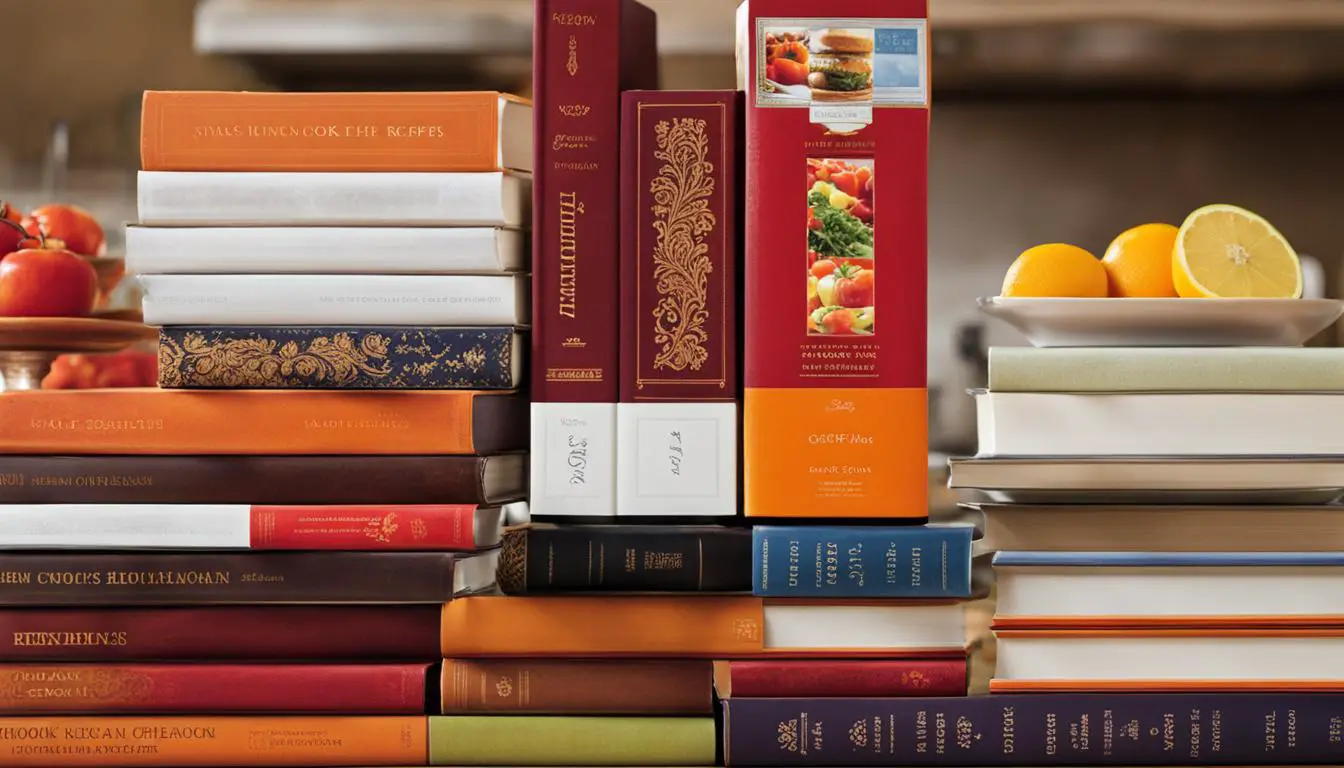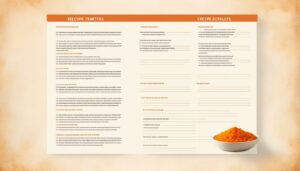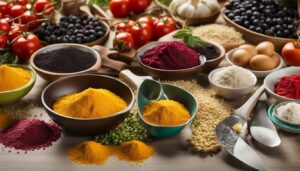The number of recipes in a cookbook can vary greatly depending on the author’s intent and the target audience. While there is no set rule for how many recipes a cookbook should have, it is important to consider factors such as the book’s theme, the level of detail in the recipes, and the desired length of the cookbook. Let’s explore the process of creating a cookbook and the factors to consider when deciding how many recipes to include.
Contents
- 1 6 Steps to Self-Publish a Cookbook
- 2 Cookbook Layout and Design Considerations
- 3 What Are Common Cookbook Trim Sizes?
- 4 Cookbook Dedication Examples
- 5 Titling Your Cookbook Like a Pro
- 6 6 Steps to Writing a Successful Cookbook
- 7 Setting up Your Cookbook Page Layout
- 8 Smallest and Simplest Trim Size
- 9 Pleasing Trim Size for More Complex Layouts
- 10 The Biggest Trim Size
- 11 Conclusion
- 12 FAQ
- 12.1 How many recipes should a cookbook have?
- 12.2 What are the steps to self-publishing a cookbook?
- 12.3 What considerations should be made for cookbook layout and design?
- 12.4 What are common cookbook trim sizes?
- 12.5 What are some examples of cookbook dedications?
- 12.6 How can I title my cookbook effectively?
- 12.7 What are the steps to writing a successful cookbook?
- 12.8 How should I set up the page layout for a cookbook?
- 12.9 What is the smallest trim size for a cookbook?
- 12.10 What is a pleasing trim size for more complex cookbooks?
- 12.11 What is the largest trim size for a cookbook?
- 12.12 What should I consider when creating a cookbook?
- 13 Source Links
Key Takeaways:
- The number of recipes in a cookbook can vary depending on the author’s intent and the target audience.
- Factors such as the book’s theme, recipe detail, and desired length should be considered when deciding how many recipes to include.
- There is no set rule for the ideal number of recipes in a cookbook.
- The goal should be to create a cohesive and engaging collection of recipes that aligns with the cookbook’s purpose.
- Consider the level of detail, diversity of recipes, and the interests of the intended audience when determining the recipe quantity.
6 Steps to Self-Publish a Cookbook

Self-publishing a cookbook can be an exciting and rewarding process. Whether you’re a seasoned chef or a passionate home cook, sharing your recipes with the world is a great way to showcase your culinary skills and creativity. To help you navigate the cookbook publishing process, here are six essential steps to self-publishing your own cookbook.
Step 1: Build a Social Media Following
Before you publish your cookbook, it’s important to build a strong online presence. Use social media platforms like Instagram, Facebook, and YouTube to connect with food enthusiasts and build an engaged community. Share behind-the-scenes glimpses of your cooking process, teaser recipes, and polls to understand your audience’s preferences. This will not only help you promote your cookbook but also attract potential buyers.
Step 2: Decide on a Theme for the Cookbook
An appealing theme can make your cookbook stand out among the sea of other culinary publications. Select a theme that reflects your unique style, expertise, or explores a specific cuisine. Whether it’s healthy recipes, comfort food, or international flavors, a theme will give your cookbook a cohesive and marketable identity.
Step 3: Test the Recipes
Thoroughly testing your recipes is crucial to ensure that they are accurate, well-written, and, most importantly, delicious. Cook each recipe multiple times, making note of measurements, cooking times, and any potential adjustments. Consider involving friends, family, or even a group of beta testers to get valuable feedback before finalizing your recipes.
Step 4: Get Professional Photos
The visual appeal of your cookbook plays a significant role in enticing readers. Invest in professional food photography to capture stunning images of your recipes. High-quality, mouthwatering photos can make a huge difference in attracting attention and making your cookbook visually appealing.
Step 5: Create Compelling Content
In addition to recipes, enrich your cookbook with compelling content that adds value for readers. This could include personal anecdotes, cooking tips, or even stories behind the recipes. Engaging content not only enhances the reader’s experience but also helps establish a genuine connection with your audience.
Step 6: Hire an Editor and Designer
To ensure the professionalism and readability of your cookbook, engage the services of a professional editor and designer. A skilled editor will meticulously proofread your recipes, ensuring accurate measurements, clear instructions, and a consistent tone. A talented designer will bring your vision to life, creating an aesthetically pleasing layout, selecting fonts, and arranging the text and images in an engaging way.
By following these six steps, you can successfully self-publish your own cookbook. From building a social media following to hiring professionals for editing and design, each step plays a crucial role in creating a cookbook that stands out on the shelves and delights food lovers worldwide.
Cookbook Layout and Design Considerations
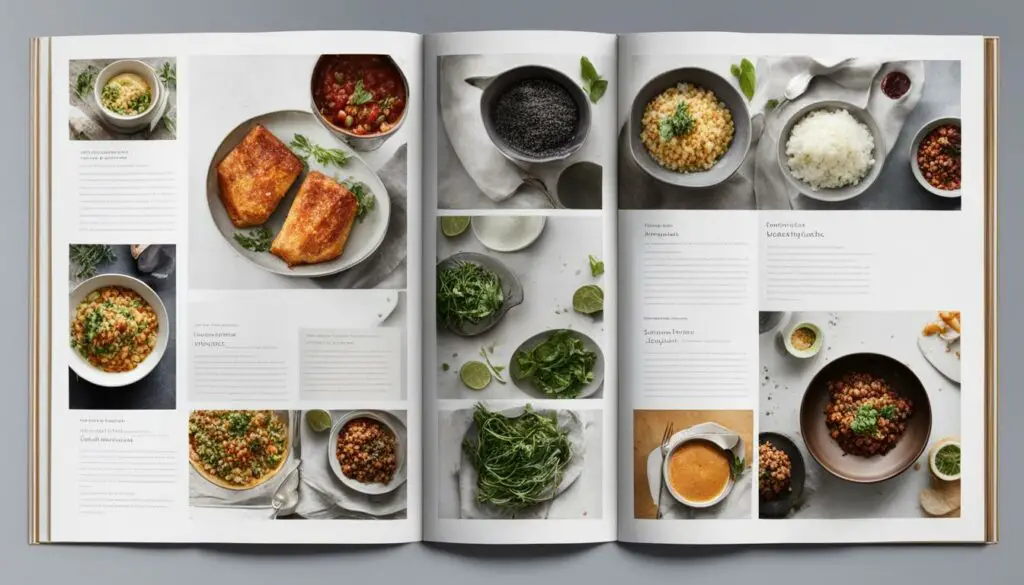
The layout and design of a cookbook play a crucial role in its overall appeal and usability. When creating a cookbook, it’s important to consider various elements such as the layout, binding, font choice, and trim size. By paying attention to these factors, you can enhance the user experience and make your cookbook visually appealing.
Layout
The layout of a cookbook should be visually appealing, making it easy for readers to follow the recipes. Clear instructions and ingredient lists are essential for a seamless cooking experience. Consider using different layouts for various recipe types, such as side-by-side layouts for complex recipes and single-page layouts for simpler ones.
Binding
The binding of a cookbook should be sturdy and durable, ensuring that the book can withstand frequent use in the kitchen. Coil or comb bindings are common choices as they allow the book to lay flat while open, making it easier for cooks to follow recipes without the book closing on its own.
Font Choice
The font choice in a cookbook is crucial for legibility. Make sure to select a font that is clear and easy to read, even in smaller sizes. Consider using larger font sizes for recipe titles and headings to make them stand out, while keeping smaller font sizes for ingredient lists and instructions.
Trim Size
The trim size of a cookbook refers to its physical dimensions. It is important to choose a trim size that ensures the cookbook is easily readable while cooking. Here are some common trim sizes for cookbooks:
| Trim Size | Dimensions (inches) |
|---|---|
| Small | 6 x 9 |
| Medium | 7.5 x 9.25 |
| Large | 8.5 x 11 |
Choose a trim size that best suits the content and style of your cookbook. A smaller trim size may be suitable for minimalist designs, while a larger trim size can accommodate more complex layouts and photo-intensive designs.
By carefully considering the layout, binding, font choice, and trim size, you can create a visually appealing and user-friendly cookbook that will inspire home cooks and make their culinary journeys more enjoyable.
What Are Common Cookbook Trim Sizes?
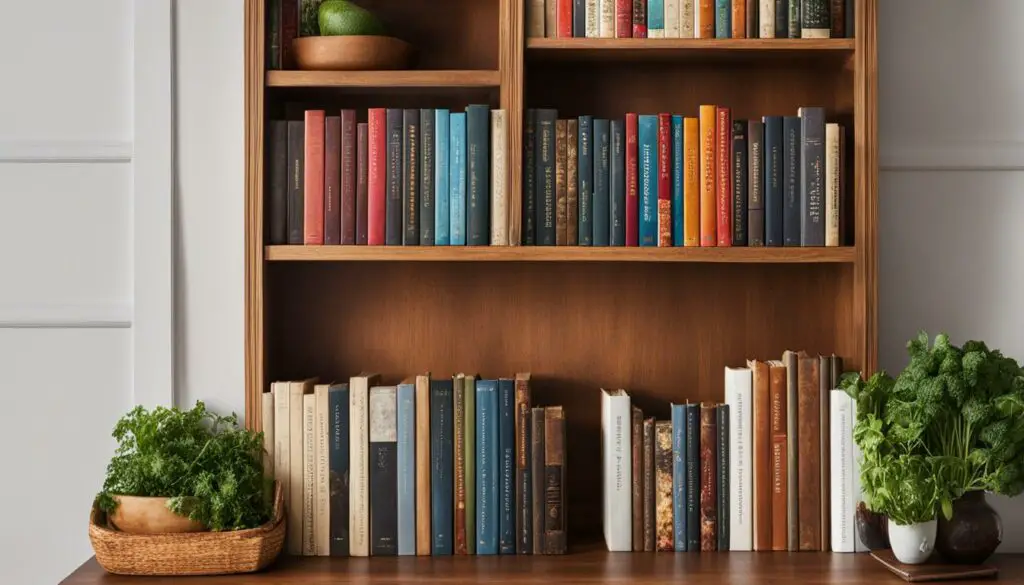
When it comes to creating a cookbook, choosing the right trim size is essential. The trim size determines the overall dimensions of the book and plays a significant role in its aesthetics and functionality. Common trim sizes for cookbooks include:
| Trim Size | Dimensions |
|---|---|
| 6 x 9 inches | 15.24 x 22.86 cm |
| 7.5 x 9.25 inches | 19.05 x 23.50 cm |
| 8.5 x 11 inches | 21.59 x 27.94 cm |
The choice of trim size depends on various factors, such as the amount of content, the level of detail in the recipes, and the desired aesthetic. It’s important to select a trim size that allows for comfortable reading while cooking and provides ample space for page layout and design.
Keep in mind that larger trim sizes offer more room for visuals and additional text, making them ideal for comprehensive cookbooks. On the other hand, smaller trim sizes are great for minimalist designs and compact cookbooks.
Cookbook Dedication Examples

When it comes to creating a cookbook, many authors choose to include a dedication page as a heartfelt gesture of gratitude and appreciation. This special section allows authors to acknowledge and thank those who have supported them throughout the process of bringing their cookbook to life. Let’s explore some cookbook dedication examples that demonstrate different ways authors can express their heartfelt sentiments.
Dedicating a cookbook to a loved one is a popular choice for many authors. It’s a meaningful way to honor the support and inspiration provided by spouses, family members, or close friends. For example, an author might dedicate their cookbook to their mother, thanking her for passing down cherished family recipes and instilling a love for cooking. This personal touch adds an emotional connection for readers and pays tribute to the people who have played significant roles in the author’s culinary journey.
Another common dedication choice is expressing gratitude to culinary inspirations. Cookbook authors often have mentors, chefs, or food influencers who have influenced their cooking style and techniques. In this case, an author might dedicate their cookbook to a renowned chef who served as a mentor or role model, highlighting the impact they had on their culinary career. This type of dedication not only honors the contribution of these culinary inspirations but also provides readers with insights into the author’s cooking philosophy.
Some cookbook authors use the dedication page as an opportunity to support a cause or organization close to their hearts. They might dedicate their cookbook to a charity, food bank, or nonprofit organization that focuses on alleviating hunger or promoting sustainable cooking practices. By dedicating their cookbook in this way, authors can raise awareness and encourage readers to support these important causes.
“I dedicate this cookbook to my beloved mother, whose love for cooking inspired me to explore the flavors of the world. Every dish in this book is a tribute to her culinary legacy.”
“In loving memory of Chef Julia, whose passion for food and unwavering dedication to culinary excellence continue to inspire me every day.”
“This cookbook is dedicated to The Food Bank of America, whose tireless efforts in fighting hunger have touched the lives of countless individuals. Together, we can make a difference.”
The dedication page is a powerful tool for cookbook authors to convey their appreciation, share personal stories, and connect with their readers on a deeper level. It adds a touch of authenticity and emotion to the cookbook and reminds readers of the human journey behind the delicious recipes.
Titling Your Cookbook Like a Pro
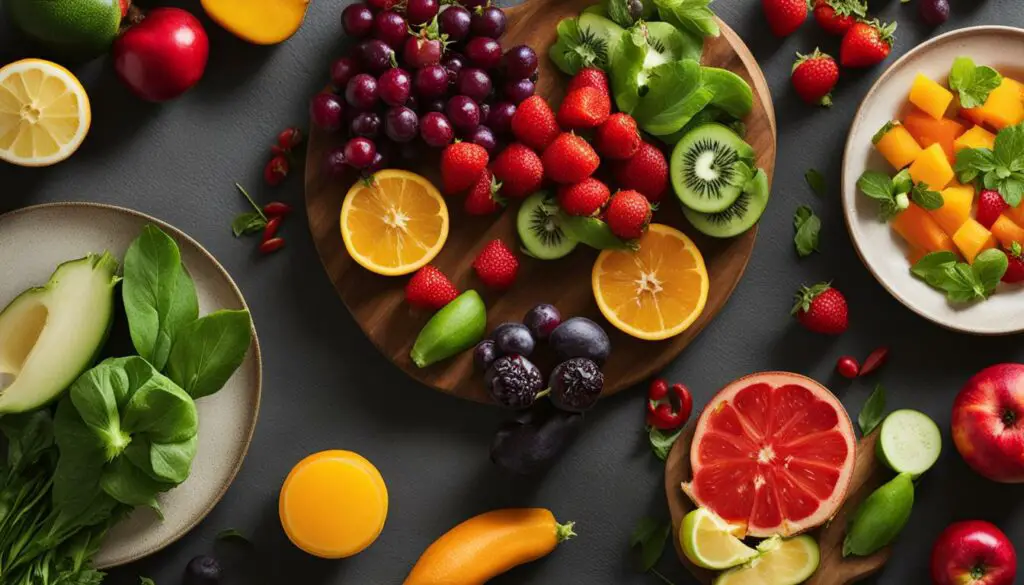
Choosing a title for your cookbook is an important step in creating an attractive and marketable product. The title should be descriptive, catchy, and memorable to grab the attention of potential readers. It’s crucial to consider your target audience, the type of cuisine featured, and any unique selling points or themes that set your cookbook apart. Incorporating elements of humor or personality can also help make the title stand out.
When brainstorming title ideas, you can draw inspiration from other published cookbooks in your genre. This can give you a sense of the trends in cookbook titling and help you come up with fresh ideas. Additionally, conducting market research can help ensure that your chosen title resonates with your target audience.
Here are some tips to help you in titling your cookbook:
- Be descriptive: Clearly communicate the type of cuisine or cooking style featured in your cookbook, highlighting its key aspects in the title.
- Stay catchy: Use words or phrases that are attention-grabbing and create curiosity, enticing potential readers to pick up your cookbook.
- Make it memorable: Craft a title that sticks in the reader’s mind, making them eager to share it with others and come back to it time and again.
- Consider your target audience: Tailor the title to appeal to the specific demographic you’re targeting, taking into account their interests, preferences, and aspirations.
- Highlight unique selling points: If your cookbook offers something different or has a specific theme or focus, make sure to emphasize it in the title.
- Inject humor or personality: Adding a touch of wit or showcasing your personality in the title can make it more memorable and relatable to readers.
Remember, the title of your cookbook is the first impression potential readers will have of your work. It should captivate and entice them to explore further. So take your time, brainstorm ideas, and create a title that truly represents the spirit and content of your cookbook.
6 Steps to Writing a Successful Cookbook
Writing a cookbook is an exciting endeavor that allows you to share your passion for food with others. To ensure the success of your cookbook, it is important to follow a structured writing process. Here are six key steps to help guide you:
- Determine Your Motivation: Start by identifying your motivation for writing a cookbook. Is it to showcase family recipes, share your culinary expertise, or explore a specific cuisine? Understanding your motivation will help shape the direction and tone of your cookbook.
- Build off a Theme: Choose a theme that will give your cookbook a cohesive and unique identity. It could revolve around a specific type of cuisine, dietary preference, or cooking technique. A well-defined theme will attract a specific audience and make your cookbook stand out.
- Develop Recipes: Create a collection of recipes that align with your chosen theme. Experiment in the kitchen, refine each recipe, and document them with clear instructions and ingredient lists. Don’t be afraid to add your own creative twists to make the recipes your own.
- Gather a Team: Collaborate with professionals who can enhance the quality of your cookbook. This could include a recipe tester to ensure accuracy, a food photographer to capture enticing images, and an editor to refine the written content. A talented team will elevate the overall look and feel of your cookbook.
- Get Published: Decide on the publishing route that best suits your goals and resources. Self-publishing gives you control over the entire process, while traditional publishing offers wider distribution. Research publishing options, submit your manuscript, and work closely with your chosen publisher to bring your cookbook to life.
- Market the Book: Once your cookbook is published, it’s time to promote it to your target audience. Utilize social media platforms, food blogs, and local events to generate buzz. Engage with your readers, offer cooking tips, and encourage them to share their experiences with your recipes. The power of word-of-mouth can greatly impact the success of your cookbook.
By following these six steps, you will be well on your way to writing a successful cookbook that inspires and delights home chefs around the world. Happy writing!
Setting up Your Cookbook Page Layout
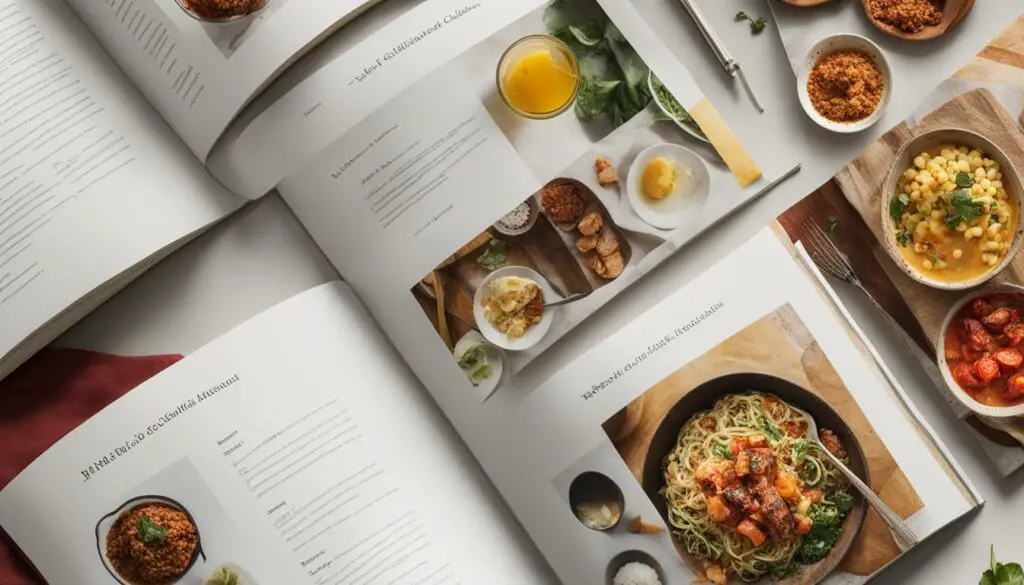
When designing a cookbook, creating an appealing page layout is key to ensuring an enjoyable reading experience for your audience. A well-structured layout will make it easy for readers to navigate through the recipes, follow instructions, and find the information they need.
Here are some essential tips to consider when setting up your cookbook page layout:
- Create a hierarchical structure: Organize your content in a logical hierarchy, with clear headings, subheadings, and sections. This will help readers quickly locate specific recipes and key information.
- Use parent (master) pages: Utilize parent (master) pages to establish consistent formatting for similar elements throughout your cookbook. This will help maintain a cohesive and professional look.
- Separate text frames: Use separate text frames for each element, such as recipe titles, ingredient lists, and instructions. This allows for easier editing and rearranging of content.
- Thread text frames: Thread, or link, the text frames together to ensure a seamless flow of content from page to page. This will prevent any breaks or disjointed reading experiences.
- Experiment with layouts: Try different layouts to find the one that best suits your cookbook’s theme and style. Consider the placement of images, the use of white space, and the balance between text and visuals.
- Choose complementary typefaces: Select typefaces that are easy to read and complement the overall design of your cookbook. Use different font styles and sizes to distinguish between headings, subheadings, and body text.
By carefully designing your cookbook’s page layout, you can create a visually appealing and user-friendly experience for your readers.
Smallest and Simplest Trim Size
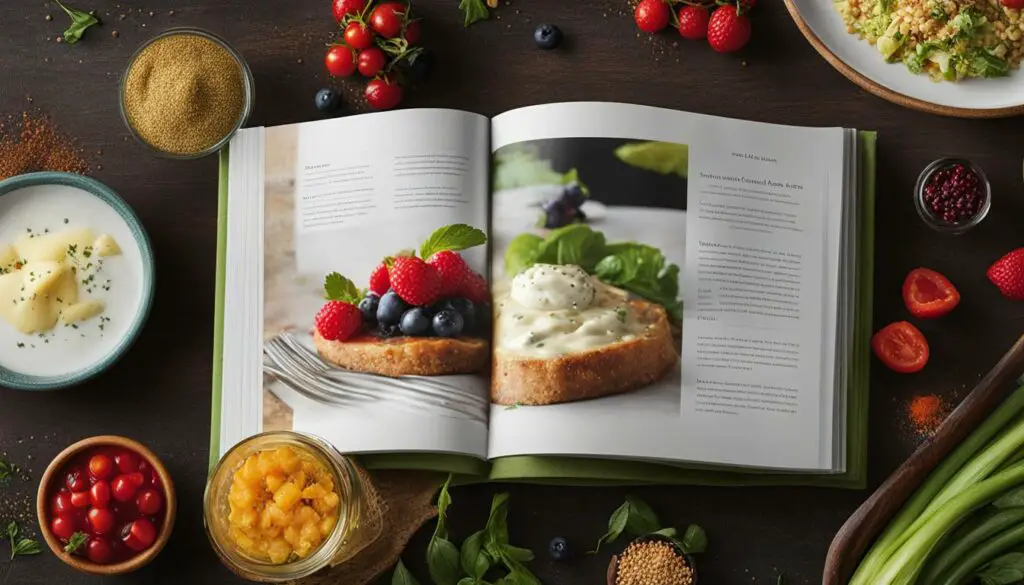
The smallest trim size for a cookbook is typically 6 x 9 inches. This compact size is ideal for cookbooks with a minimalist design that focuses on concise recipes. Whether you’re a beginner cook or simply looking to add a compact cookbook to your collection, the small trim size offers easy portability without compromising on content.
Despite its smaller format, it is essential to ensure that the text remains legible and the layout remains visually appealing. Careful consideration should be given to font size, spacing, and overall design to create an enjoyable reading experience for users.
| Advantages | Considerations |
|---|---|
|
|
Pleasing Trim Size for More Complex Layouts
A visually appealing cookbook design with a spacious layout is essential to engage readers and enhance their cooking experience. When it comes to choosing the right trim size for a cookbook, medium-sized options offer the perfect balance between creativity and readability. A popular medium-sized trim size for cookbooks is 7.5 x 9.25 inches, which provides ample space to accommodate complex recipes, large illustrations, and additional content such as sidebars or cooking hints.
The medium-sized trim size allows for more flexibility in layout and design, allowing you to create a visually appealing and spacious cookbook. Whether you’re showcasing intricate dishes or providing step-by-step instructions, this trim size offers enough room to display all the necessary information clearly and attractively.
By opting for a medium-sized trim size, you can effectively showcase the beauty and complexity of your recipes. This trim size also allows you to incorporate captivating visual elements that complement the text, making your cookbook a joy to read and explore. Whether you’re a professional chef or a passionate home cook, a medium-sized trim size enables you to create a visually stunning and informative cookbook that readers will cherish.
Advantages of a Medium-Sized Trim Size:
- Provides ample space for complex recipes
- Allows for large illustrations and additional content
- Creates a visually appealing and spacious layout
- Enhances readability and user experience
- Allows for creative design elements
With a medium-sized trim size, you have the freedom to unleash your creativity and present your recipes in a stunning and engaging way. This trim size strikes the perfect balance between readability and design, making it a popular choice among cookbook authors.
The Biggest Trim Size
The largest trim size for a cookbook is typically 8.5 x 11 inches. This size is ideal for cookbooks with a comprehensive collection of recipes and a heavy emphasis on visuals, such as large photos or illustrations. The larger format allows for more detailed images and can accommodate additional text or instructions. This size is often used for professional or specialty cookbooks that require a high level of detail and visual impact.
If you want your cookbook to stand out and make a statement, opting for a large trim size can enhance the overall experience for your readers. The spacious layout and larger dimensions allow for a comprehensive cookbook layout that showcases your recipes and captivating visuals in stunning detail. Whether you’re a professional chef, food enthusiast, or looking to create a coffee table-worthy cookbook, a large trim size can elevate your project to new heights.
With a large cookbook trim size, you have the opportunity to create a photo-intensive cookbook design that immerses your readers in a visual feast. From glossy food photography to step-by-step illustrations, the larger dimensions allow for the creation of stunning visuals that bring your recipes to life. This comprehensive cookbook layout is perfect for chefs who want to showcase their culinary skills and present their dishes in a captivating way.
When crafting a comprehensive cookbook layout for a large trim size, it’s crucial to consider the balance between visuals and text. The design should be aesthetically pleasing and user-friendly, allowing readers to navigate through the recipes effortlessly. Clear typography, logical organization, and ample whitespace are essential elements that contribute to a visually appealing and comprehensible cookbook design.
By choosing a large trim size for your cookbook, you’re making a bold statement and providing your readers with a visually stunning and comprehensive culinary experience. Whether you’re creating a professional chef’s masterpiece or a specialty cookbook for a niche cuisine, the large trim size offers endless possibilities for showcasing your recipes and captivating visuals in a format that demands attention.
Conclusion
Creating a cookbook is a labor of love that requires careful planning, attention to detail, and creativity. By following the steps outlined in this article and considering the needs and interests of your target audience, you can create a cookbook that will inspire and delight home chefs around the world.
When embarking on the journey of creating your cookbook, remember to carefully determine the number of recipes you want to include. Consider your book’s theme, the desired length, and the level of detail in each recipe. This will ensure a cohesive and enjoyable reading experience for your audience.
Additionally, pay close attention to the design considerations of your cookbook. The layout, font choice, and trim size all play significant roles in the overall aesthetics and usability of your book. Aim for an appealing and easy-to-read layout, with sturdy binding, legible fonts, and a trim size that is comfortable to handle in the kitchen.
Lastly, when it comes to publishing your cookbook, consider self-publishing as a viable option. This gives you the freedom to control the entire process, from building a social media following to hiring professionals for photography, editing, and design. Take advantage of the digital age and leverage online platforms to reach a wider audience.
With these cookbook publishing tips and design considerations in mind, you have the knowledge and tools to create a successful cookbook that will make a lasting impression on aspiring chefs and food enthusiasts alike. Get started on your culinary journey and share your passion with the world. Bon appétit!
FAQ
How many recipes should a cookbook have?
The number of recipes in a cookbook can vary greatly depending on the author’s intent and the target audience. There is no set rule, but factors such as the book’s theme, level of detail, and desired length should be considered.
What are the steps to self-publishing a cookbook?
The steps to self-publishing a cookbook include building a social media following, choosing a theme, testing recipes, getting professional photos, creating content, and hiring an editor and designer.
What considerations should be made for cookbook layout and design?
Important considerations include visually appealing layout, durable binding, legible font choice, and appropriate trim size for comfortable reading and cooking.
What are common cookbook trim sizes?
Common trim sizes include 6 x 9 inches, 7.5 x 9.25 inches, and 8.5 x 11 inches. The choice depends on factors such as content, recipe detail, and desired aesthetic.
What are some examples of cookbook dedications?
Cookbook dedications can thank family, culinary inspirations, or be dedicated to a cause or organization. They add a personal touch and connection with readers.
How can I title my cookbook effectively?
Consider your target audience, cuisine, and unique selling points. The title should be descriptive, catchy, and memorable, potentially incorporating humor or personality.
What are the steps to writing a successful cookbook?
The steps include determining motivation, building off a theme, developing recipes, gathering a team, getting published, and marketing the book.
How should I set up the page layout for a cookbook?
Use a hierarchical structure with parent pages and separate text frames for recipe titles, ingredient lists, and instructions. Experiment with layouts and typefaces for the best result.
What is the smallest trim size for a cookbook?
The smallest trim size is typically 6 x 9 inches, ideal for minimalist designs and concise recipes. It is portable and suitable for beginner cooks or those seeking a compact cookbook.
What is a pleasing trim size for more complex cookbooks?
A medium-sized trim size, like 7.5 x 9.25 inches, offers flexibility for complex recipes, large illustrations, sidebars, or cooking hints. It allows for a spacious and visually appealing layout.
What is the largest trim size for a cookbook?
The largest trim size is typically 8.5 x 11 inches, suitable for comprehensive collections, and visuals like large photos or illustrations. It accommodates detailed images and additional instructions.
What should I consider when creating a cookbook?
Careful planning, attention to detail, and consideration of the target audience’s needs and interests are crucial. From recipe count to trim size and layout design, every decision contributes to the overall success of the cookbook.

